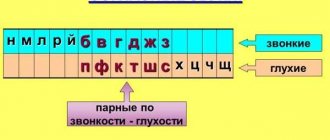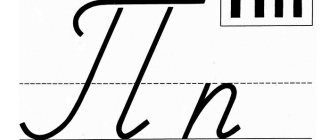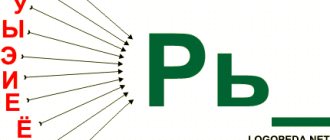In the lower grades, special attention is paid to the development of children's fine motor skills, imagination, and thinking. Gymnastics for fingers in elementary school helps the hands become obedient, which is necessary for performing precise movements in the visual arts and writing. By repeating the teacher’s movements, students activate their motor skills, develop the ability to concentrate and control movements. Before starting activities that parents can easily conduct even at home with a 7-8 year old child, it is recommended to study all the features and rules of exciting lessons.
Finger gymnastics for primary school
Finger games, which are so popular with children aged 7-8, are an activity that can significantly improve their skills. Scientists have found that hand movements are directly related to the cerebral cortex, which promotes development.
In elementary school, finger exercises are a prerequisite that allows children to take a break from unusual workload, get a boost of energy, and relax. There are many exercises that are complemented by funny rhymes, even songs that have a certain meaning - they contribute to the development of speech, a sense of rhythm, and vocabulary.
Despite the benefits of finger exercises, you should also not overuse interesting games. The duration of one lesson should not exceed a quarter of an hour, and it is better to start with short lessons - just a few minutes.
Formation of fine motor skills of hands in children with ODD
The development of children's speech is closely related to the state of fine motor skills of the hands. Employees of the Institute of Physiology of Children and Adolescents have found that the development of fine movements of the fingers has a positive effect on the functioning of the speech areas of the cerebral cortex.
The development of fine motor skills of the hands is of enduring importance for the overall physical and mental development of the child throughout preschool childhood. Therefore, training the movements of the fingers is the most important factor stimulating the child’s speech development and is of great importance.
V. Sukhomlinsky also wrote: “The origins of children’s abilities and talents are in their fingertips. From them, figuratively speaking, come the finest streams that feed the source of creative thought.” And the great German thinker I. Kant compared the hand with “as if the brain had come out.”
Modern scientists have proven that the level of development of children's speech is directly dependent on the degree of formation of fine movements of the fingers. As a rule, if finger movements are developed in accordance with age, then the child’s speech development is within the age norm. If a child’s development of hand-eye coordination and fine motor skills does not correspond to his age, or there is a pathology, then such children need especially careful preparation for learning.
In the vast majority of children with speech disorders, their fingers are inactive, their movements are not precise, and not coordinated.
Such children cannot hold a pencil or pen for a long time; as fatigue increases, their movements become imprecise, large-scale, or too small.
It is imperative to stimulate children's speech development by training finger movements.
Systematic exercises to develop fine motor skills of the hands are a powerful means of increasing the performance of the cerebral cortex.
A child with poor coordination of hand movements draws worse and experiences difficulties in physical education classes and labor training, so it is very important to start developing this quality in a timely manner, long before entering school, and continue to improve it throughout the entire period of the child’s education in the first two grades. If a child develops manual motor skills, the psychological burden of learning to write will decrease, and he will be interested in learning.
Games and exercises aimed at developing fine movements of the fingers also contribute to the development of the ability to listen and understand the content of poetry, and teach them to grasp the rhythm of speech.
Practice shows the need to develop fine finger movements from a very early age. As much as possible with children in kindergarten, it is necessary to carry out active games: folding cubes, playing with sand and water, simple prefabricated toys, learning to sculpt from plasticine, work with crayons, pencil, design, cut, glue, identify material by touch: sand, paper, fur, etc.
It is necessary to learn how to fasten buttons and simple hooks, and use a spoon and fork.
By the age of 5, children should be taught how to color, draw, copy basic shapes: circle, cross, square, cutting, gluing, and lacing shoes.
It is useful to use special exercises: arranging objects into piles taking into account the size of the shape, games: “Mailbox”, Seguin boards, “Magic Bag”.
Special classes in appliqué, drawing, and modeling are useful. In the process of visual activity, the child develops manual skill, hand-eye coordination, and hand readiness for writing.
In our speech group, we, together with teachers, regularly work to develop and improve fine motor skills of the hands and fingers. And long-term observations show how effective this work is for the development of children’s speech.
Using these exercises and finger games allows you to:
— regularly stimulate the actions of the speech zones of the cerebral cortex, which has a positive effect on speech correction in children; - improve attention and memory; -to make it easier for future schoolchildren to master writing skills; — to establish the positive impact of the development of finger motor skills on the correction of sound pronunciation in children; -confirm the feasibility of conducting such classes by teachers of mass and speech therapy groups.
When working with children with speech impairments to develop fine motor skills, you should:
1. Combine games and exercises for training fingers with children’s speech.
2. Make work on improving finger motor skills regular, allocating optimal time for it, systematically.
3. Increase children's interest in such exercises by turning them into an entertaining game.
4. Involve more fingers in the movement, the movements should be energetic.
5. Start with simple exercises, moving on to more complex ones (first one hand works, then the other, then both).
6. Exercises are performed briefly.
7. All exercises are performed slowly at first, achieving clarity, gradually accelerating the pace. First give verbal instructions, accompanied by a demonstration, then eliminate the demonstration.
My practice shows that as fine movements of the fingers improve, speech function develops. First, subtle movements of the fingers develop, then articulation of syllables appears; all subsequent improvement of speech is directly dependent on the degree of training of finger movements.
From personal experience I can confidently say that the sooner deviations in psychomotor development in children with speech disorders are identified and work to eliminate them begins, the faster the positive result and the shorter the time spent working with these children.
For children 5-7 years old, I suggest “playing the piano”, performing: “fist, palm, edge”, showing “scissors”, “goat”, “ring”, crossing the index and middle fingers, alternately extending the fingers of both hands, checking skills working with a pencil or pen to identify pathologies of fine motor skills of the hands.
In my work I use different forms of work: independent activity, entertainment, holidays, special classes, in play, at home, on a walk. These include finger gymnastics, finger games, fairy tale games, physical education lessons, shadow games, and practicing basic graphic skills. I actively involve educators and parents in this process.
As a rule, work on the development of fine motor skills of the hands has a positive effect on the development of children’s speech: production, automation, sounds go much faster, speech becomes more literate, emotional, the overall intellectual development of the child increases, children master writing skills much easier and faster, which solves many problems. problems while studying at school.
In the kindergarten speech group, we, together with teachers, carry out regular work to develop and improve fine motor skills of the hands and fingers.
An important place in the development of fine motor skills in children is occupied by the rhythmic organization of movement. Such movements can be clapping, tapping a wooden stick on the table, etc.
The following exercises for developing hands and fingers are very effective and fun. For example, my children and I imitate the procedure of washing hands under running water with different pressures. The main task is to create a sense of contrast in children.
We also use drawing in the air with our hands and fingers. The “Rainbow Splashes” exercise develops imagination, promotes the formation of a culture of emotional experience, and increases overall physiological tone.
Children love to “sculpt” a hand. This exercise helps develop imagination, self-confidence, and activates biologically active points of the skin. It's a kind of massage. Children “sculptors” sculpt with a skillful and confident hand. First, the “hand-clay” is kneaded, achieving its plasticity. Then knead and smooth each finger.
We also invite children to press hard on an imaginary wall, smooth out an imaginary surface, draw the shape of a rectangle, square, circle with their palms, and make movements on imaginary glass.
For several years now in my work I have been using 10 finger gymnastics complexes compiled by me. We perform this gymnastics daily for 3-5 minutes at the beginning of the lesson, or in the middle in the form of physical education.
It begins with warming up the fingers - clenching into a fist and unclenching the fingers. Then we use exercises to relax the fingers and hands. Next, tasks are given to maintain the posture of the hand.
At first, all exercises are performed slowly. You can help children take the necessary position and support their hand.
Gradually the tasks become more difficult. We start working with both hands at the same time.
Exercises to hold a pose are carried out by imitation and verbal instructions. It is important that the instructions of the speech therapist or teacher are clear, precise, and contain elements of encouragement and assessment of the children’s actions.
We learn each complex for a week, then repeat. One complex consists of five exercises and one nursery rhyme. I recommend it to speech therapists, teachers, and parents.
What is it for?
The main goal of finger exercises is to develop fine motor skills. With regular exercise, the benefits for children are undoubted, because at the same time they improve:
- accuracy and dexterity;
- fantasy, thinking;
- memory, speech;
- concentration of attention;
- Creative skills.
Exercises in grade 2 also allow students to take a break from prolonged drawing and writing. Simple hand movements relieve muscle tissue fatigue and prevent finger spasms, which often happens in children whose hands are not accustomed to prolonged stress.
Exercises
Teachers should remember that it is better to start with one or two exercises, allowing the child to learn the characteristics of each movement. It is recommended to conduct activities before and after class.
"Ring"
Finger movements allow you to relax tired muscles, rest, and improve motor skills.
Step-by-step exercise:
- Connect the thumb with the others.
- Be sure to ensure that even “rings” are formed.
- Carry out the exercise alternately on one and the other hand.
- Connect the fingers of both hands at the same time.
During the lesson, you can say any counting rhyme - this helps the child develop rhythm.
“Fist, palm, rib”
Another set of gymnastic movements that contributes to the development of primary school students.
Carrying out:
- Clench your fists and lightly tap on the surface of the desk.
- Unclench your fists and tap on the desk with the edge of your palm.
- Change the position of your hand and tap the surface with your palms.
It is not recommended to make sharp jerks - relaxing, smooth movements of the hands will bring benefits.
https://youtu.be/1b3ItMqYDGE
"Noughts and Crosses"
You can turn a simple activity into a fun game for children. The main thing is to understand that a zero is crossed fingers (middle finger with index finger). Zero - connected pads of the thumbs and ring fingers.
Now the children just have to follow the teacher’s commands and reproduce the necessary figures. You can even have a competition to see who can respond first and draw a cross or a zero. Over time, complicate the exercise - alternate the ring and middle fingers, start with movements of the left or right hand, finish with both at the same time.
"Fish"
Putting your palms together is a nimble “fish” that moves at the teacher’s command. Move your hands up and down, forward and return to the starting position. You can simultaneously make tilts and turns in different directions, because the fish do not move in one direction.
Light warm-up
It is recommended to complete the set of exercises with a light warm-up. Children can play “okay”, alternately clench and unclench their fingers, holding their arms suspended, or simply shake their hands, pretending to be a fan.
Finger gymnastics in lessons
When accepting children into the first grade, not only the teacher is faced with the fact that first-graders cannot hold a pen correctly, but the students also face difficulties in mastering their first writing skills. But writing is a rather complex skill for a student, based on subtle hand movements. Only the coordinated work of the small muscles of the hand, developed visual perception and voluntary attention will contribute to success in mastering the technique of writing. Why does a child hold a pen incorrectly? The reason is insufficient development of the hands. In this case, it is necessary to turn to finger gymnastics, since simple exercises will help ensure the necessary preparation of the child’s hand for writing.
Fine motor skills are the ability to make small and precise movements with the hands (fingers, hands). The sphere of fine motor skills consists of a considerable number of different hand movements - from simple (holding something, grabbing something) to complex (writing technique, drawing, drawing).
The formation of fine motor skills is closely connected with the formation of the child’s mental cognitive processes (memory, sensation, perception, imagination, thinking), as well as with the development of speech. Science has proven that the speech and motor centers of the brain are located nearby - which is why stimulating the nerve endings that are located at the tips of the fingers helps to enhance speech development. Thanks to the development of fine motor skills, children develop manual dexterity, beautiful handwriting, and quick reactions. If fine motor skills are well developed, it means that the student is fine with memory, logic and thinking.
Starting from the first days of working with first-graders, I pay great attention to the formation of fine motor skills. In every lesson, when doing a written activity - either at the beginning, or in the middle or at the end - we massage our fingers. Students and I carefully massage the fingers of each hand, starting from the tips. We do this with stroking, rubbing, circular movements.
Here are a few of the exercises we do with our children.
1. “Clap” - clap your hands loudly and loudly.
2. “Flower” - palms facing each other and closed. The palms then open, forming a flower, then close again.
3. Both palms are on the table. Simultaneously with the pronunciation of the tongue twister, the right hand slides along the table and outlines a circle, and the left hand slides up and down.
4. Hands lie on the table, as if on keys:
- hitting the table with the thumbs of both hands;
- hitting the table with the index fingers of both hands, etc.
5. Palms lie tightly on the table. Starting with the little finger, we raise one finger on the right hand, then on the left hand, then on both hands at the same time.
6. Both palms are on the table. One palm moves up and down, the second moves left and right.
To diversify the finger massage, we perform it not only with our hands, but also use various objects (for example, pencils, pens, crumpled paper).
This variety also contributes to the development of intelligence.
- Roll a pen or pencil between your palms.
- Use the blunt end of a pen or pencil to massage the pad of each finger.
- “Preparing the dough” - place one palm on the desk and roll out a pen or pencil over it.
Children also enjoy performing verbal finger exercises:
1,2,3,4.5 (claps) The finger went out for a walk (the index finger makes a circular movement in the center of the left hand) Just left the gate - Lo and behold, another one is coming to him (the middle finger joins) It’s fun to walk together, Come on, the third one comes out (nameless joins) Together we will dance in a round dance - Here. (clap and hands change places)
2. The fingers of both hands are folded together. - Who arrived? (click thumbs) We, we, we! (the big ones are pressed, the rest are clapping) - Mom, mom, is that you? (click thumbs) Yes, yes, yes! (clap index fingers) Dad, dad, is that you? (thumbs clap) Yes, yes, yes! (clap middle fingers) - Brother, brother, is that you? (thumbs clap) Yes, yes, yes! (clap ring fingers) - Oh, sister, is that you? (click thumbs) Yes, yes, yes! (clap our little fingers) We are all together! Yes Yes Yes! (all fingers)
Indeed, regular repetition of such exercises has a beneficial effect on speech, increases the mobility and flexibility of the hands, and improves blood circulation. Thanks to finger exercises, children also develop their creative abilities. If you put in more effort at the beginning, you can get a good result in the end.
Adviсe
There are some useful tips that will help you get the most out of your classes and avoid unwanted mistakes. Be sure to take into account the following requirements and recommendations in each lesson:
- Before the lesson, make sure that the child’s hands are warm, if necessary, do a warm-up - rub your palms, straighten or bend your fingers;
- if the exercises are combined with a poetic text, you should not rush to read - pronounce the words at a slow pace;
- after mastering the pace, begin gradual acceleration;
- It’s better not to rush into updating your repertoire – 3-5 different games are enough;
- If the child is tired, stop the lesson immediately.
Another important rule is to choose games that require the participation of the little fingers, which are usually inferior in mobility to other fingers.
Finger warm-up is a useful and exciting activity for children that allows them to achieve positive results in the development of many skills. The main thing is not to force the child - if for any reason he refuses to repeat the exercise, it is better to abandon the lessons for a while. Otherwise, the student’s desire to continue will quickly disappear, and useful activities will become an unpleasant burden and a waste of time for him.







